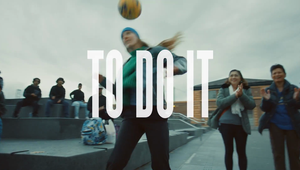
‘That’s Fentalife!’ How This Creative Agency Is Highlighting the Hypocrisy of San Francisco’s Opioid Crisis

Crafting an eye-catching brand campaign is the bread and butter of the advertising industry. Almost every creative in the biz has worked on an ad that promotes an exciting product or service, encouraging consumers to opt in to some tantalising new offering. Advertising a better future and demanding action to stop a crippling, decade-long fentanyl crisis, however, is a brief not many agencies will be quick to jump on.
So far in 2023, the number of overdose fatalities in San Francisco has reached an all-time high. According to The Guardian, drug-related deaths in the city increased by 41% in the first quarter of this year, which equates to “one person dying of an accidental overdose every 10 hours.” Committed to putting an end to the violence and danger that the worsening drug crisis propagates, local non profit TogetherSF Action recruited the help of fellow San Francisco-based creative agency, Partners in Crime, for their latest PSA, ‘That’s Fentalife!’
Operating as a full service creative syndicate, Stephen Goldblatt’s Partners in Crime agency model harnesses the power of independent creatives, strategists and media planners, to amplify the voices of brands and organisations looking to be heard above the noise. To learn more about the parameters of this project, LBB’s April Summers spoke to Stephen and Kanishka Cheng, founder and CEO of TogetherSF Action, to find out how the teams devised a PSA that would shock local elected officials out of complacency and into action.
LBB> What made Partners in Crime the right creative agency to help bring this idea to life?
Kanishka Cheng> Stephen and Partners in Crime came to us with years of award-winning advertising experience and we would not have been able to do this campaign without them. Their desire to be a part of the change that San Francisco needs, and their willingness to lean into controversy and experiment with bold language and visuals, was absolutely critical to our campaign. It helps that their team is local—they understand San Francisco and are passionate about the cause. They really love the city and want to see it thrive.
LBB> Starting at the beginning, how did the idea for this campaign first come about? And, looking at the finished imagery, how closely does it align with your initial vision?
Kanishka> ‘That’s Fentalife!’ was created in collaboration with Partners in Crime. They provided all ideas pro bono as a way to give back to the city they love, in hopes of putting an end to this crisis once and for all.
Our current ads track closely with our initial vision for the campaign and have generated the conversation we hoped it would in the city. Conversations with activists and community organisations in the Tenderloin and SOMA, and with those in the drug treatment community helped refine our focus. San Francisco exports its lifestyle to the world—we wanted to juxtapose that image of the city with the disturbing reality of life for so many who are suffering from substance use disorder on our streets.
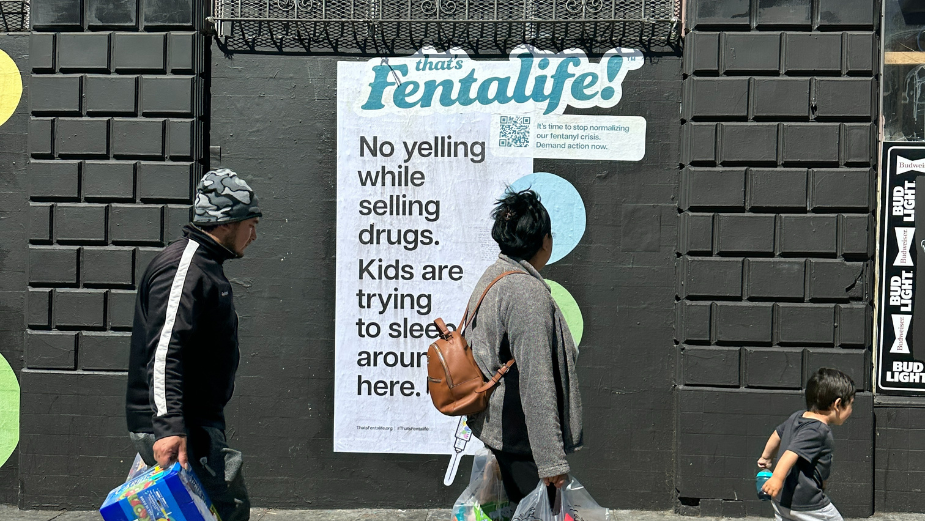
LBB> Can you tell us a little about how Partners in Crime’s unique syndicate model was applied to this campaign? How did you ensure you were assembling the right team, for example?
Stephen Goldblatt> One of the highlights of every project is curating the perfect team – it sets the tone for how the project will go. Alex Flint (creative director/copywriter), Cris Logan (design director) and I have worked together for years on big and small projects. We remain good friends and trusted collaborators because there is no ego, only team mentality. They both have a perfect combination of maturity, talent and flexibility. Not surprisingly, both said “count me in” without any questions when I tapped them for this initiative. Our model allows us to partner with clients and take all the bureaucracy off the table. We seamlessly worked alongside the Together SF Action team. We supplemented their needs at times, and they supplemented ours. It was an all-hands-on-deck situation, and both sides showed up ready to work. There is real trust between our organisations.
LBB> Why do you think this message needs to be heard right now? And do you think this is something specific to SF, or are we talking about a problem with national - maybe even international - implications?
Stephen> We are reaching a tipping point with the crisis. OD deaths are spiking and more people are falling prey to fentanyl as it is finding its way into every street drug, including meth and cocaine. We are getting the message out now as SF City Hall prepares their budget because we need to prioritise recovery resources and healthcare support, as well as public safety measures to close the open-air drug markets. Other US cities including Portland, LA, Philly and others around the world, are looking at SF with great interest to see how we approach this problem. We have the opportunity to lead the world out of this generation-defining crisis.
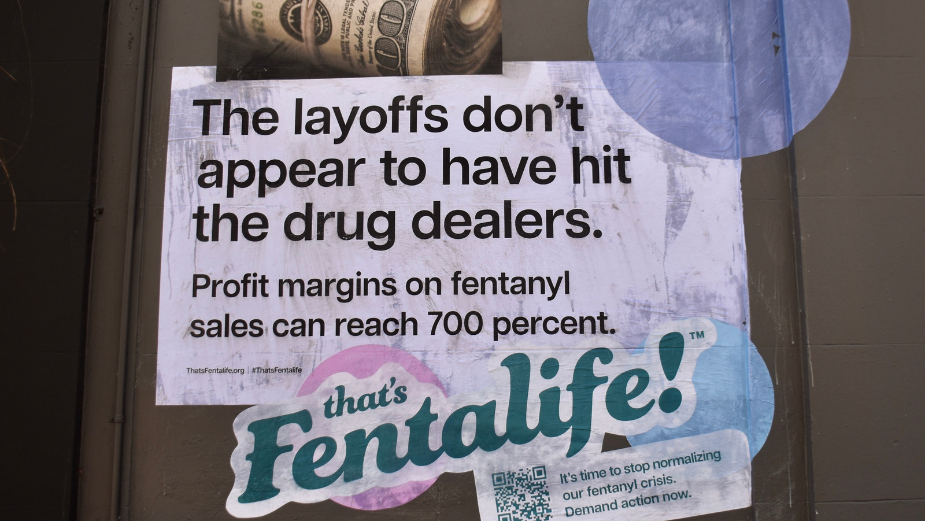
LBB> And why do you think a direct and hard-hitting campaign like this is necessary in order to cut through and drive action?
‘That’s Fentalife!’ functions as an ironic play on the saying, “that’s life.” It calls attention to City Hall’s inaction and failure to address the drug crisis in San Francisco. We want to make people notice that like the frog in the pot of boiling water, we’re slowly beginning to accept this level of dysfunction as our new normal.
Our hope is that this campaign will make people realise they don’t have to accept things as they are—they can take action. That’s Fentalife! is acting as a frame for what is actually happening on our streets right now. And if you find yourself more upset by an ad than the person suffering beneath it, well, that says something, doesn’t it? As one of our coalition members said, “the posters are not the problem.”

LBB> Some of the wording on the campaign is especially hard-hitting. Can you talk us through your team’s creative process for deciding on which copy would adorn the imagery?
Stephen> What’s happening on our streets is so horrific: multiple overdoses; dead bodies discovered daily; people being left to deteriorate without the necessary recovery and treatment options; children having to navigate through open-air drug markets on their way to school. The reality is so harsh, so inhumane, that we needed to find a tone that would hit home. Language that would make people stop and feel something. That’s Fentalife! allowed us to present the facts with bitter irony. And when we combined it with a bright and cheery, deeply satirical design system inspired by the actual colours of rainbow fentanyl, we found it had real stopping power. If it comes across as anger or disappointment, well that’s because we are angry and disappointed in how long our elected officials have let this go on without a major intervention.
LBB> How did you decide on where in SF to publicise the imagery?
Stephen> The murals are site specific. We installed the lines, “Our drug dealers now have more rights than our kids” directly across from a well guarded playground and pre-school in the Tenderloin. The kids, all wearing reflective vests, play 20 feet from drug deals, and users shooting up. The kids are the ones who have to pay the price for the dealers to go about their business on the other side of the fence.
The Tenderloin has a high concentration of children living there. So, we placed the lines, “Please keep quiet while dealing drugs. Kids are trying to sleep around here,” to make the point that this problem has been normalised to the point of pleading with drug dealers to be considerate instead of having policies in place that would make them stop dealing altogether.
The building locations in this first phase were all donated by the building owners who want to see the neighbourhood change for the better. In some cases, their businesses have closed because of what’s going on. Their patrons stopped coming because they no longer felt safe.
LBB> What was the most challenging aspect of putting this campaign together, and how did you overcome it?
Kanishka> One challenging aspect of our campaign was building the coalition of recovery advocates and community leaders and ensuring that the ads were reflective of what we, as a coalition, are asking for. Thankfully, we have a fantastic community engagement team that has spent months doing the work and building relationships with these individuals and organisations. We spent weeks in meetings with coalition members and were able to hold the right conversations to ensure we had their backing and that our campaign was moving in the right direction.
Another challenge we faced was the actual installation of our wheat pastings throughout the City. First, we had to source buildings and earn the permission of building owners to put our ads up. Secondly, we needed to install all of our ads on the same day so that the campaign could have a proper “launch.” Fortunately, our organisation has built up a coalition of San Franciscans dedicated to making change happen, and we were actually able to source an array of building spaces pro-bono from our supporters. Additionally, our creative ad agency, Partners in Crime, was on site the day of installation to ensure that everything went as smoothly as it could.
We saw countless people openly smoking what appeared to be fentanyl. Drug dealers operating with impunity. Fights broke out. Conditions were so dire in the neighbourhood that the playground at Sergeant John Macaulay Park needed city employees to guard the entrance to ensure only people with children were allowed inside.
Stephen> Assembling a team to work quickly on a potentially highly controversial, highly debated campaign wasn’t the most challenging aspect. Having TogetherSF Action as well as all of the different coalitions members approve the work also wasn’t the most challenging. Neither was having my kids help trim out all of the needles, dots and logos or installing six murals in some of the roughest neighbourhoods in SF in one day.
The most challenging aspect for Partners in Crime was to be faced with the issue first hand. While scouting, prepping and installing, we witnessed things we never thought we’d see. We reminisced about bars and restaurants we used to go to but are now boarded up. And we saw the human condition of how thousands are living (barely surviving) on the streets of our city. It was heartbreaking and disappointing. We’re the home of peace and love - but you’d never know it looking at our streets. The problem is so much bigger and more ingrained in our city than I think people realise and we hope this campaign helps identify ways to support and make change.
LBB> How have you been finding the reaction to the campaign so far? Has any of it surprised you?
Kanishka> Overall, we’ve been happy with the amount of attention and conversation our ads have generated among the broader public and City Hall. Our ad campaign has been covered by numerous outlets - both local and national - including the San Francisco Chronicle, NBC Bay Area, the New York Post, Daily Mail, and CBS Bay Area. The #ThatsFentalife hashtag has seen widespread usage on social media, spreading to activists in places like Boston, New York, and Portland.
Our campaign has definitely struck a nerve among SF residents— just two days after going live, hundreds of San Franciscans have taken action and sent an email to the Mayor and Board of Supervisors using our call to action page. Sometimes it takes an out-of-the ordinary concept to shake people awake and make them recognize the scale of the crisis right in front of them.
We understand that not everyone thinks this campaign strikes the right tone. Some people have criticised our mentions of NARCAN in ads. To clarify, NARCAN is an amazing life-saving tool. The problem is that the fentanyl crisis has made it so necessary, and its use has become so prevalent. NARCAN isn’t the problem—fentanyl causing overdoses is the problem.
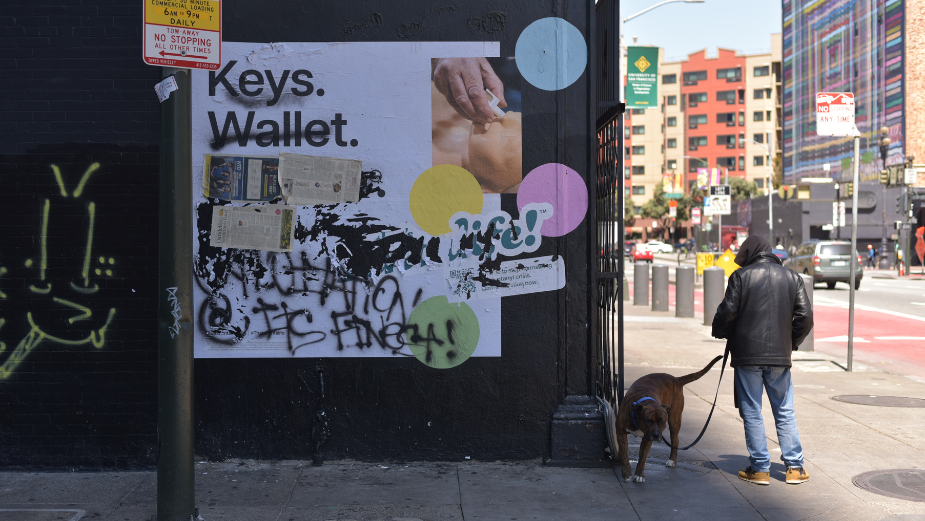
We’ve also received criticism for calling for more enforcement for drug dealing. We want San Francisco to follow solutions that have worked in other places that dealt with similar drug crises, like Portugal. We don’t want to criminalise drug use—we want additional funding so people with substance use disorder have real treatment options when they need it. But right now, we have open-air drug markets operating in broad daylight in San Francisco. That’s not healthy or safe for anyone in the city, and there needs to be enforcement consequences for dealers.
We are OK with those dissenting voices, especially if it helps our city to have these difficult conversations about the drug crisis, and push our elected leaders to find consensus around policies that will work to end the drug crisis and alleviate the human suffering on our streets.
LBB> And finally, do you have any plans to build on the ‘Fentalife’ project?
Kanishka> This campaign is designed to ensure effective programs to end the drug crisis are included in San Francisco’s next budget, so we’re focused on making sure the campaign achieves real results. This campaign will only be a success if it pushes City Hall to take action and address San Francisco’s fentanyl crisis. We’ll be rolling out more creatives as part of our campaign shortly to keep up the pressure on city officials.
Stephen> Interestingly, we’ll know this campaign has been a success if we stop putting up the work. The attention of this campaign has brought to light the fact that many other cities are also struggling with bad policies. We have considered making this campaign a toolkit other communities can access and implement to get their leaders to address the problem–that no one wants to or deserves to live the Fentalife.











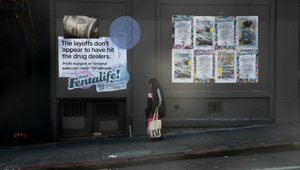
.jpg)
